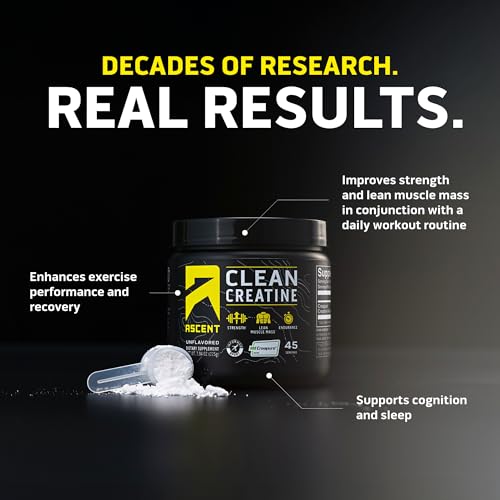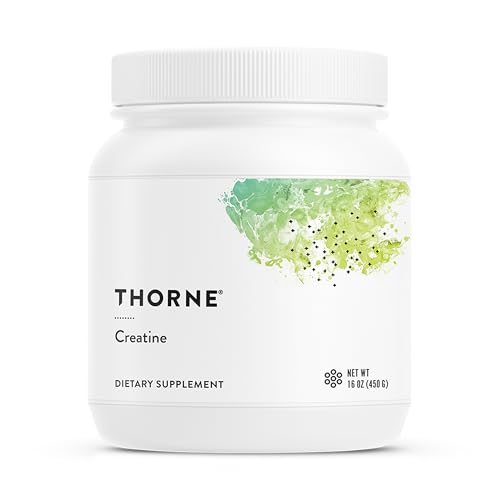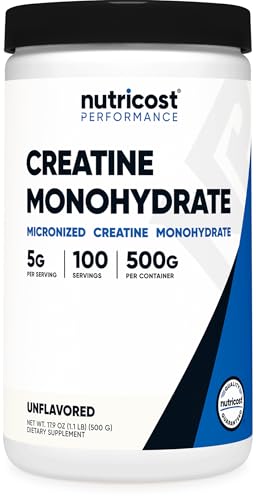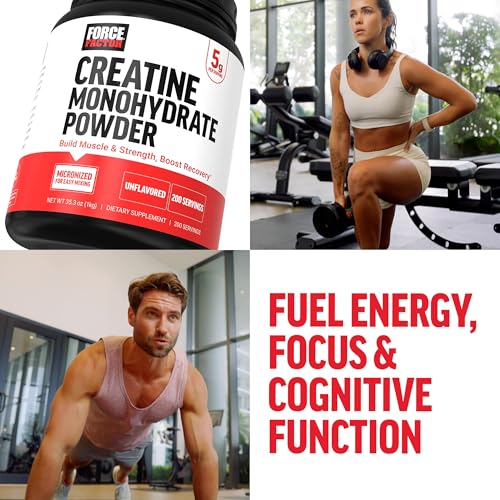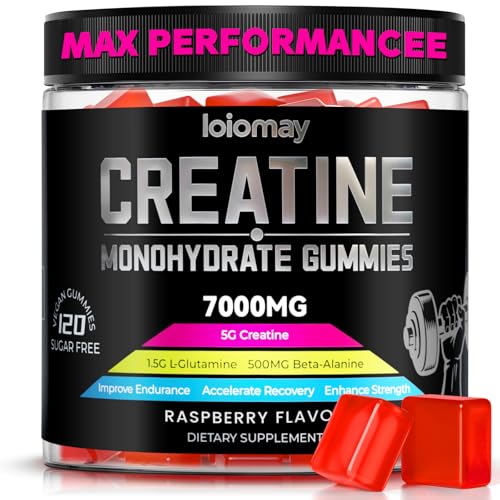Why Creatine Matters After 50
As we age, we naturally lose muscle mass, strength, and energy. This process, called sarcopenia, typically begins in our 40s and accelerates after 50. Creatine monohydrate—one of the most extensively researched supplements in sports nutrition—has shown promise in helping older adults maintain strength and muscle quality.
But here’s the most common question: when should you take creatine—morning or post-workout?
The short answer: It doesn’t matter nearly as much as you think. Consistency matters far more than timing.
Best Creatine Timing for Older Adults – Just the facts
What Creatine Does for Older Adults
Creatine works by increasing your body’s stores of phosphocreatine, a compound that helps muscles produce energy during high-intensity activities. For older adults, this translates to:
- Improved strength and power for daily activities like climbing stairs, carrying groceries, or getting up from a chair
- Better exercise performance during resistance training
- Enhanced muscle recovery between workouts
- Possible support for bone health when combined with resistance exercise
Emerging research on brain function: Some studies suggest creatine may support cognitive function, memory, and mental fatigue, particularly in older adults. However, this research is still developing, and results have been mixed. The brain does use creatine for energy production, but we need more high-quality studies specifically in aging populations before making strong claims.
Morning vs Post-Workout: What Science Actually Shows
Here’s what might surprise you: multiple systematic reviews have found that timing has minimal impact compared to total daily intake. Your muscles build up creatine stores over time—it’s not like pre-workout caffeine that needs precise timing.
Morning Creatine: The Practical Choice
Benefits:
- Easiest to remember and maintain as a daily habit
- Works perfectly well on both training and rest days
- No need to plan around workouts
- May support energy and focus throughout the day
Considerations:
- No significant drawbacks; works as effectively as any other time
Post-Workout Creatine: A Slight (But Not Critical) Edge
Benefits:
- Some research suggests a minor advantage for muscle creatine uptake when taken with protein and carbohydrates after exercise
- Convenient if you’re already having a post-workout shake
- May slightly enhance recovery, though the effect is modest
Considerations:
- Requires workout-dependent timing, which can disrupt consistency
- Less practical on rest days or when schedules vary
- The “30-60 minute anabolic window” is largely overstated in popular fitness culture
The Truth About Nutrient Timing: While taking creatine post-workout with carbs and protein may offer a small advantage, the difference is marginal. Missing this window doesn’t negate creatine’s benefits. What matters most is that your muscles stay saturated over time through daily supplementation.
The Best Timing Strategy for Older Adults
Priority #1: Take it every single day, regardless of when.
Creatine works by building up in your muscles over weeks, not hours. Think of it like a water reservoir—you need to keep it consistently full, not time each drop perfectly.
Priority #2: Choose whatever time you’ll actually remember.
If that means with your morning coffee, great. If it’s easier to mix with your post-workout protein shake, that works too. The best time is the time you won’t forget.
Flexible Framework:
| Day Type | Suggested Timing | Why |
|---|---|---|
| Workout Days | Post-workout or morning | Post-workout offers a marginal advantage if combined with protein/carbs, but morning is fine too |
| Rest Days | Morning or with any meal | Maintains muscle saturation; timing is irrelevant on rest days |
Getting Creatine from Food
Before supplementing, know that creatine occurs naturally in:
- Red meat (beef, pork): ~2g per pound
- Fish (salmon, tuna, herring): ~1-2g per pound
- Poultry: ~0.5g per pound
However, you’d need to eat about 1-2 pounds of meat daily to match a 5g supplement dose. Additionally, cooking can degrade some creatine content. This is why supplementation is practical for most older adults, especially those eating less meat or following plant-based diets.
Note: Vegetarians and vegans often see more dramatic benefits from creatine supplementation because they have little to no dietary intake.
How to Use Creatine Safely After 50
Start gradually: Begin with 3 grams daily for the first week to assess tolerance.
Skip the loading phase: While some protocols recommend 20g/day for 5-7 days, this isn’t necessary. A steady 3-5g daily dose will fully saturate your muscles within 3-4 weeks and causes fewer digestive issues.
Stay hydrated: Aim for 8-10 glasses of water daily. Creatine draws water into muscle cells, which is beneficial for performance but requires adequate hydration. This is especially important for older adults who may have reduced thirst signals.
Pair with resistance training: Creatine works best when combined with strength training 2-3 times per week. Even bodyweight exercises, resistance bands, or light weights will enhance the benefits.
Consult your healthcare provider if:
- You have pre-existing kidney disease or impaired kidney function
- You take medications that affect kidney function (like NSAIDs or certain diabetes medications)
- You have concerns about medication interactions
Important: Decades of research show creatine monohydrate is safe for healthy older adults. Claims that it “damages kidneys” in healthy individuals are not supported by evidence. However, those with existing kidney issues should exercise caution and consult a physician.
What to Expect: Individual Variation
Response timeline: Most older adults notice improvements in strength, endurance, or recovery within 2-4 weeks of consistent use.
Non-responders: Approximately 20-30% of people are “non-responders” who see minimal benefits from creatine. This is often because they already have naturally high muscle creatine levels, typically due to high dietary meat intake. If you don’t notice benefits after 6-8 weeks, you may be in this group.
Typical benefits:
- 5-15% improvement in strength and power output
- Modest increases in lean muscle mass (1-4 pounds over 8-12 weeks with training)
- Improved performance in activities requiring short bursts of energy
Choosing a Quality Creatine Supplement
Look for creatine monohydrate—it’s the most researched form with the strongest evidence base. Avoid expensive proprietary blends or “buffered” versions; they don’t offer meaningful advantages.
Quality markers:
- Third-party testing: NSF Certified for Sport, Informed-Sport, or USP Verified
- Creapure® seal: Indicates pharmaceutical-grade German manufacturing
- Micronized: Dissolves more easily in water, reducing grittiness
- Pure ingredient list: Just creatine monohydrate, no unnecessary additives
Typical cost: $15-25 for a 3-4 month supply. If it’s significantly more expensive, you’re likely paying for marketing rather than quality.
Potential Side Effects and Practical Tips
Common but mild:
- Slight weight gain (2-4 pounds) from water retention in muscles—this is normal and beneficial
- Digestive discomfort or bloating (usually from loading phases or poor-quality products)
- More frequent urination initially as your body adjusts
How to minimize side effects:
- Take with food to reduce stomach upset
- Divide dose (2.5g twice daily instead of 5g once) if experiencing digestive issues
- Ensure adequate water intake
- Avoid loading phases
Myths to ignore:
- Creatine does not cause dehydration (it may actually improve hydration status)
- It does not cause cramping when properly hydrated
- You do not need to “cycle off” creatine
- It will not make you “bulky”—older adults typically see improved muscle quality and function, not dramatic size increases
FAQ
How long can I take creatine?
Indefinitely. Long-term studies (up to 5 years) show no adverse effects in healthy adults. Many researchers consider continuous use preferable to cycling.
Can I take creatine with my medications?
Creatine is generally safe with most medications. However, consult your doctor if you take diuretics, NSAIDs, or medications affecting kidney function.
Will creatine interfere with my protein powder?
No. They work synergistically. Taking them together, especially post-workout, is perfectly fine and may offer slight benefits.
I’m a woman—is creatine still beneficial?
Absolutely. Creatine works equally well for men and women. Women may see slightly less water retention and similar strength and functional benefits. See our recent review covering the best creatine for females.
What if I miss a day?
Not a problem. Your muscle stores deplete slowly. One missed day won’t erase your progress, though consistency produces the best results.
Bottom Line
For older adults, creatine timing is vastly overrated.
The research is clear: taking 3-5 grams of creatine monohydrate every single day matters infinitely more than whether you take it at 7 AM or 7 PM. Your body accumulates creatine over weeks, not hours.
The real keys to success:
- Consistency – Daily intake, no matter when
- Quality – Pure creatine monohydrate from a tested source
- Hydration – 8-10 glasses of water daily
- Resistance training – Even light strength work 2-3x per week amplifies benefits
Choose whatever timing fits your routine and stick with it. Your muscles—and your future self—will thank you.
Disclaimer: This article is for informational purposes only and does not constitute medical advice. Consult with your healthcare provider before starting any new supplement regimen, especially if you have pre-existing health conditions or take medications.

Rick Huey is a fitness writer who has dedicated his life to living an active lifestyle. With more than 30 years of experience in the fitness industry, Rick is a respected contributor for FitFab50.com, where he shares his wealth of knowledge with a wide audience. His dedication to promoting the benefits of living an active lifestyle has inspired many people to pursue their own fitness journeys with enthusiasm and dedication.
Last update on 2025-12-06 / Affiliate links / Images from Amazon Product Advertising API


